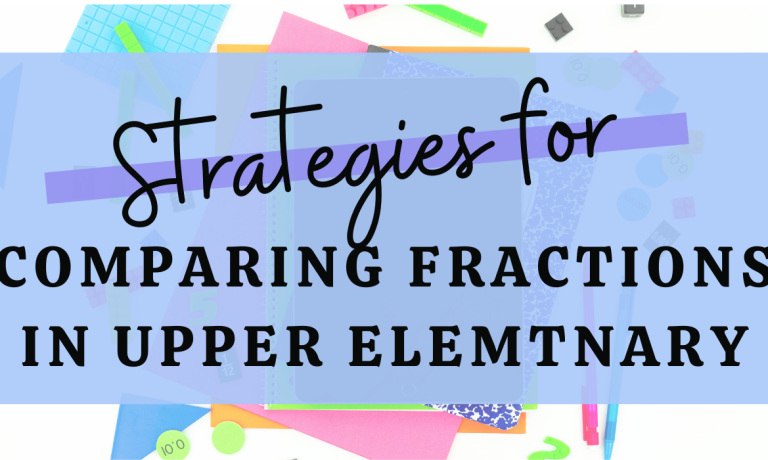What are some strategies for comparing fractions in upper elementary grades? This post will talk about four strategies to help you with this!
Equivalent Denominators
This is a very popular strategy for comparing fractions in upper elementary! It supports students with finding equivalent fractions by using multiplication. It is not always the most efficient process, but it will provide a very clear and obvious answer. When two fractions have the same denominator, the fraction with the largest numerator is the bigger fraction. This is a popular strategy for comparing fractions in upper elementary because they are finding equivalent fractions through multiplication often in order to add fractions, and this strategy supports that process. If you need ideas on how to introduce the importance of common denominators check out this blog post!
Manipulatives
Using manipulatives is a great strategy to compare fractions in upper elementary and lower elementary. It is hands on as well as visual, so it will be very simple for students to see which fraction is greater. Some of my favorite manipulatives for this are fraction tiles because it is easy for students to line up and compare.
Area Models
My favorite type of area models are using squares. Students draw each of the fractions with their own area model. Then they find what the common denominator would be, and split each area model so they have the same number of total pieces. Whichever area model has the most colored in squares is the bigger fraction. This is usually done as a prior step for students using multiplication to find equivalent fractions and then compare from there. Area models provides a visual for students to use, which makes it easier.
Benchmark Fractions
This is my favorite strategy to compare fractions in upper elementary. It shows that the student has deep understanding of a fraction if they can compare it to a benchmark fraction, such as 1/2. Instead of taking the time to find a common denominator, students compare each fraction to a benchmark fraction. For example, if students were comparing 6/8 and 2/6 they would notice that 6/8 is greater than 1/2 and 2/6 is less than 1/2, so 6/8 would be the larger fraction.
Students have many options when comparing fractions! Limiting them to just one option does not give them the freedom and flexibility that they need in their thinking with fractions. Hopefully this post helped give you some new ideas and strategies to support students in upper elementary with comparing fractions.
Want some more fraction ideas? Checkout this blog post about how you can use fraction squares in your classroom and head to my Instagram to see some of these ideas in action!









2 thoughts on “Strategies for Comparing Fractions in Upper Elementary”
Thank you so much for your amazing ideas. I have struggled with math all of my life. I just found you on the Math Summit today.
Thank you!